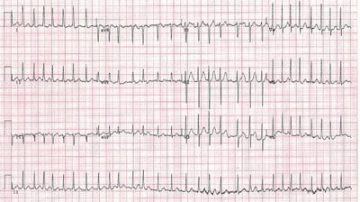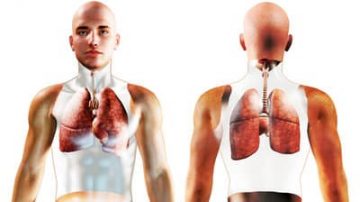An elevated peripheral neutrophil-lymphocyte ratio is an indicator of inflammation. Investigators from a Turkish university hospital hypothesized that this ratio might differ in patients with subarachnoid hemorrhage (SAH) versus those with other headache syndromes. They performed a retrospective study of…
Read MorePrior studies have found that in patients with cryptogenic ischemic strokes, extended post-stroke cardiac monitoring detects intermittent atrial fibrillation (AF) in up to 20% of cases. Now, an industry-sponsored study from Germany randomized 400 patients all over 60 years old…
Read MorePrior studies have suggested that patients should be intubated emergently in an upright, head-forward position rather than in the traditional supine position. This is especially true for intubations of morbidly obese patients where it is known that pre-oxygenation and intubation in…
Read MoreThe Infectious Diseases Society of America (IDSA) guidelines remain the gold standard guidelines for infectious disease problems. The IDSA recommends treating patients with community-acquired pneumonia (CAP) for 5 days and it recommends treating those with healthcare-associated pneumonia (HCAP) for 7-8…
Read MoreThe bactericidal activity of antibiotics depends on the class of antibiotic used. Some antibiotics like vancomycin, aminoglycosides and fluoroquinolones are dose-dependent for their bactericidal activity. Other antibiotics like beta-lactam antibiotics are time-dependent antibiotics. Time-dependent antibiotics have increased bactericidal activity the…
Read MoreAlthough pulmonary embolism (PE) occasionally presents with syncope, patients with syncope are infrequently assessed for PE. This prospective study from Italy studied 560 elderly adults (mean age, 76) who were hospitalized for syncope. Those excluded from the study included patients…
Read MoreThere are multiple noninfectious medical disorders that mimic cellulits. In this retrospective study, researchers focused on misdiagnosis of cellulitis in 259 patients hospitalized with presumed diagnoses of lower extremity cellulitis at a Boston teaching hospital. Patients with complicating factors (e.g.,…
Read MoreThe Universal Termination of Resuscitation Guidelines suggest that resuscitation should be terminated if at least four rounds of CPR have occurred and the following three criteria are met: The arrest was NOT witnessed by emergency medical services (EMS) There has…
Read MoreThe 2015 American Heart Association Advanced Cardiovascular Life Support guidelines deemphasizes advanced airway placement during the initial resuscitation. Out-of-hospital–arrest data suggest lower survival among patients who are intubated in the field. Therefore, it is important to determine the importance of…
Read MoreThe shock index — the ratio of heart rate to systolic blood pressure — is a new measure that may predict a poor outcome. Most of the studies using the shock index have been in trauma patients and those with…
Read MoreDefinitions Presumed source with SIRS criteria = infection Infection with life-threatening organ dysfunction = sepsis Sepsis refractory to intravenous fluid challenge = septic shock Treatment of sepsis or septic shock Draw blood cultures x 2 Analyze any fluid that may…
Read MoreBoth the fractional excretion of sodium (FENa) and the fractional excretion of urea (FEUrea) have an established role as part of the work-up for determining if acute kidney injury (AKI) is due to a prerenal or intrarenal cause. Although both…
Read MoreCardiac troponin assays have gone through a tremendous evolution since they were introduced into clinical labs in 1995 until the most recent ultra-sensitive assays became prevalent in 2007. The original troponin T (TnT) and troponin I (TnI) assays had a…
Read MoreThe bactericidal activity of antibiotics depends on the class of antibiotic used. Some antibiotics like vancomycin, aminoglycosides and fluoroquinolones are dose-dependent for their bactericidal activity. Other antibiotics like beta-lactam antibiotics are time-dependent antibiotics which depend on maintaining drug concentrations above…
Read MoreAlthough pulmonary embolism (PE) occasionally presents with syncope, patients with syncope are infrequently assessed for PE. In this prospective study from Italy, researchers determined the prevalence of PE in 560 elderly adults (mean age, 76) who were hospitalized for their…
Read MoreCategories
- ACLS (1)
- Arterial line (33)
- Cardiovascular diseases (77)
- Central line (55)
- Chest Tube (39)
- Dermatology (4)
- Emergency Procedures (139)
- Endocrinology (6)
- Endotracheal Intubation (36)
- Events (24)
- FAST Exam (12)
- Featured (113)
- Featured Procedure (42)
- Gastrointestinal diseases (32)
- Ginecology (3)
- Glidescope Intubation (21)
- Hematology (33)
- Hospital Procedures (85)
- Infections (32)
- Intraosseous line (8)
- King Tube (27)
- Laryngeal Mask Airway (18)
- Lumbar Puncture (36)
- Mechanical Ventilation (34)
- Medical General (95)
- medical procedures (258)
- Needle Decompression (6)
- Nephrology (11)
- Neurological diseases (12)
- Oncology (4)
- Paracentesis (32)
- Pericardiocentesis (3)
- Procedural Sedation (19)
- Respiratory diseases (85)
- RUSH Exam (8)
- Thoracentesis (37)
- Traumatology (24)
- Travel (27)
- Ultrasound-Guided Peripheral IV (13)














